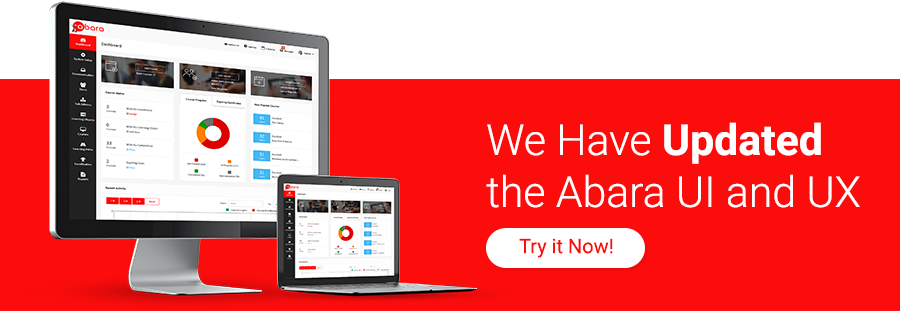Have we stirred the hornet’s nest with this one? Probably! But, it’s a question begging to be asked. Moreover, someone had to answer it. So, let’s just get into whose LMS licensing needs are greater.
An LMS is a corporate or an enterprise-level software. Which means, it’s not built and licensed for the use of just one team, department, or a group of people. An example: HRMIS (human resource management information system) which only the HR department uses.
The LMS is used by learners and the administrators with completely different sets of needs and varying expectations from one software.
User needs are the first thing one considers when prospecting an enterprise software. In the case of an LMS, we are looking at the needs of 2 distinct types of users consisting of employees, customers, vendors, L&D, HR, and internal/external trainers. For the sake of simplicity, let us club the L&D, HR, and trainers into one group called the administrators and the employees, customers, and vendors into another group called the learners.
While some may say, “the needs of any one group cannot be prioritized over the other.” This article is about taking a clear stand. Let’s make one thing clear, aiming for two birds with one stone never works. As a result, you’re always going to find an LMS falling short somewhere. Either on the learner or the administrator side. That’s the case with almost any software or product in general. Hence, our recommendation is simple—take an informed decision about whose needs are important and select an LMS accordingly.
However, if you’re still keen on knowing whose needs are absolutely paramount, then it is the learners whose needs are considered first. Why? Because it is a platform meant for learning and training, hence the learner’s needs trump those of the administrators.
On this Page
Many LMS prospectors enter the market with the intention of reshaping their corporate learner training landscape
On this Page
The main aim is to:
- Engage
- Train
- Improve
- Manage
To achieve such goals, you need an LMS with learner-centric features that directly aid with training. However, during the testing and assessment phase, prospectors miss the mark by heavily focusing on administrator-centric features.
Very Important to Note
No LMS vendor builds an LMS focusing solely on the learner or admin side. Most LMS are balanced and based on a careful ratio between learner and administrator. No one side is completely limp. As a result, don’t select an LMS with terrible administrator controls just because the learner side is terrific.
After all, access to a competent training tool helps the administrator with training a group of learners more efficiently. However, the time that an L&D spends on the LMS vs the time spent by a genuine learner vastly varies, with the learners spending more time. Moreover, looking at the fluctuating learning habits of each employee and the importance of engaging a mass learner base, it is wise to think about the learner first.
That being said, how do you select a learner-centric LMS with capable administration features? Moreover, what are the primary administration features that an LMS needs without leaning too heavily on the admin capabilities solely, thereby resulting in a platform getting rejected because it lacks an admin feature you perceive as “being very important?”
List of Absolutely Required Administration Features
If an LMS has these administrative features and they are simple to use, the LMS is good enough for the admin:
- Assessment Tools
- Course Creation
- Blended Learning
- SCORM Compliant
- Learning Path
- Video Conferencing
- Mobile Learning
- Automation
- UI and UX
- Sub Delegation
- Knowledge Repository
- Assessments
- Certification Expiry
- Recommendation
An LMS with these functions and a good UI and UX—easy to use and navigate—works perfectly well for the administrator. After all, the administrator sets up the platform, adds learners and courses, launches training, and assess outcomes. These functions help do just that.
The LMS must focus on employees post administration tasks. This is what you really assess the LMS for. Are your learners enjoying the training? Are they engaged? Is the LMS accessible?
List of Absolutely Required Learner Features
- Instructor Led Training
- Social Learning
- Mobile Accessibility
- Offline Access
- Queries Function
- Expert Recommendation
- UI and UX
- Learning Path
- Notification
- Certification
These features plus a lot more are really what you should focus on when selecting an LMS. Hence, the aim is to keep the learner’s needs in mind. Moreover, consider the LMS’s ability to engage the learner and keep them training.
Very Important to Note
Feature heavy LMS make prospecting buyers happy. However, it is wise to assess if these features are really necessary, moreover, are they learner-centric or administration-centric.
Any feature which is learner-centric will automatically increase in value as compared to administrative-centric features. As a result, keep that in mind when scrutinizing an LMS.
Also, ask for the learner side demo, test the learner account yourselves, and do everything that learner may.
Conclusion
As mentioned earlier, look for a balanced LMS but don’t go overboard looking for administrator-centric features and totally ignore the learner side. As a result, the more learner-centric features your LMS possesses, the more appealing the LMS is to your learners, which is where it matters!
Even then, formulate your training plan, assess your training needs, and then decide who plays an important role in using your LMS. If your administrator genuinely needs the advantage here because it suits your strategy, go ahead and select an LMS accordingly.
At Abara, we have designed the LMS with a learner-centric approach while ensuring your administrators have all the functions needed to plan and host a successful training initiative. Moreover, we consciously left out needless features on both learner and admin side to make the LMS wieldy under all circumstances for users of all types.
To know more about Abara, write to us at contact@abaralms.com or click here m to schedule a call back. Moreover, we also develop custom eLearning courses at eNyota Learning. Get in touch!


